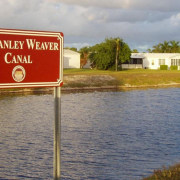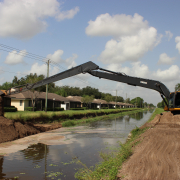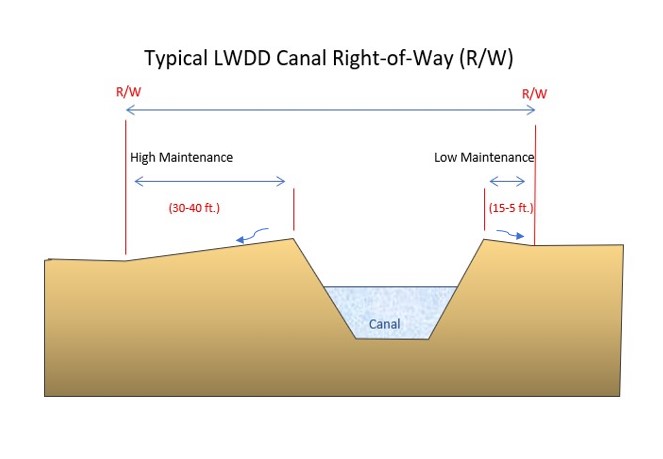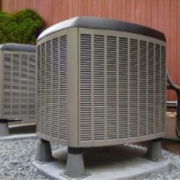Canal Maintenance-What To Expect
The Lake Worth Drainage District (LWDD) stormwater management system consists of canal channels, rights-of-way on each side of the canal and controls structures and pumps. Consisting of a network of more than 500 miles of canals, over 1,000 miles of rights-of-way and 20 major control structures, LWDD can provide effective flood control and water supply for residents, businesses, and agriculture.
Effective stormwater management is dependent on well-maintained canals and rights-of-way. But what defines “well-maintained”? A canal or right-of-way that some property owners may consider in need of maintenance is often considered well-maintained by LWDD.
Some of the necessary components for effective flood control include the free flow of water in the canal channel to divert excess stormwater from properties, and unencumbered canal rights-of-way to provide access for regular maintenance and emergency response. Through the process of aquatic vegetation removal and canal bank mowing, effective flood control maintenance is achieved.
There are numerous species of aquatic plants found within the District’s canal system. Some aquatic vegetation has the potential to slow the flow of water within the canal channel or large flood control structures. This vegetation growth is controlled with the application of herbicides and/or mechanical removal.
Canal rights-of-way and banks are mowed approximately 3-4 times a year. Flat-mowers mow the rights-of-way, and arm-mowers maintain the side slopes of the canals. This mowing schedule prevents the growth of woody vegetation that may grow to impact access and threaten flood control. Tall grass does not prevent access to canals and control structures or threaten flood control operations. Frequent mowing is not required for flood control and residents should note that grasses and other vegetation can grow several inches in height before mowing crews return to an area.
Although most property lines do not extend to the water’s edge, some property owners adjacent to the right-of-way may choose to maintain the grass to a higher degree through irrigation and more frequent mowing. However, this higher degree of maintenance is at the resident’s cost and the planting of trees and shrubs are not allowed within the LWDD rights-of-way.
Flood control and the maintenance it requires comes at a cost. All property owners within LWDD’s boundary, whether adjacent to a canal or miles away, are assessed at the same tax rate. In 2023 the assessed rate is $49.50 for a parcel equal to or less than an acre in size. By maintaining our canals and rights-of-way to flood control standards, LWDD can achieve its mission of effective flood control at an affordable cost for all residents.







